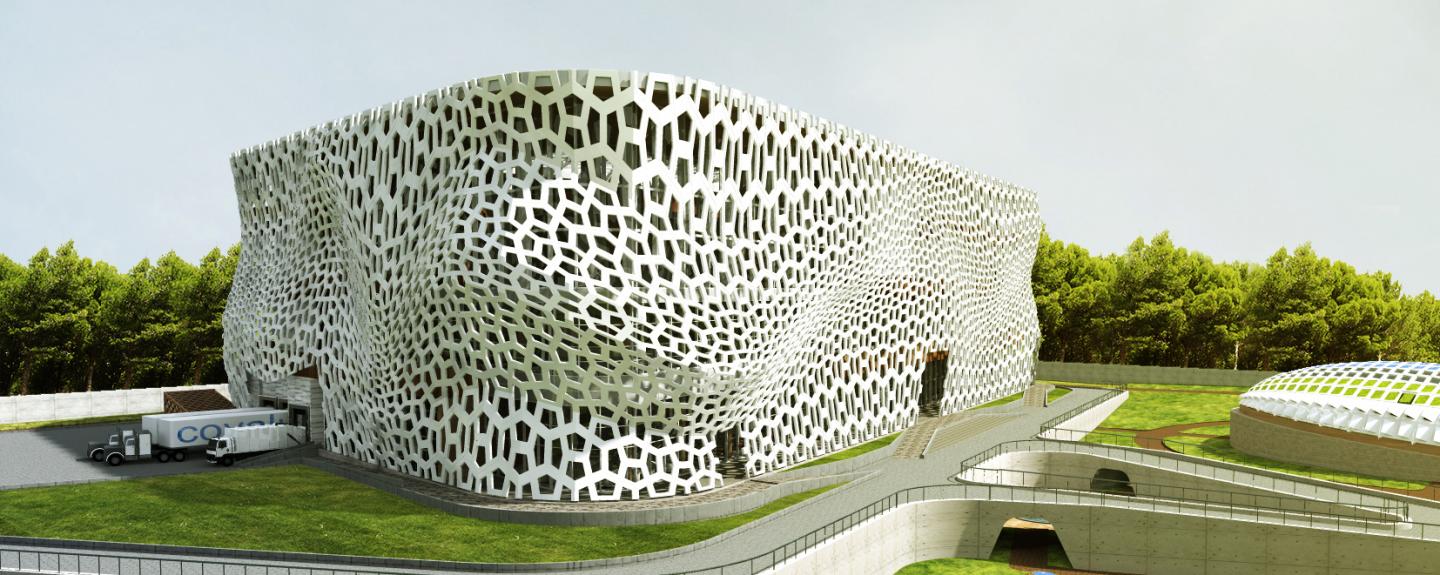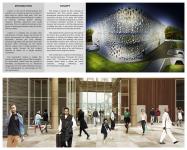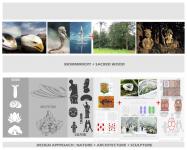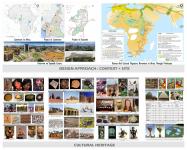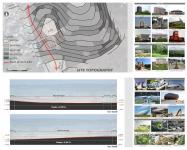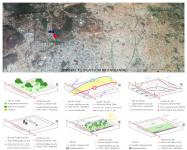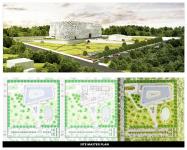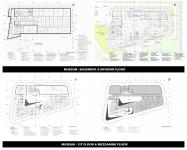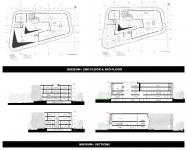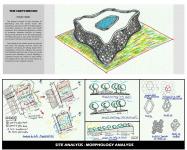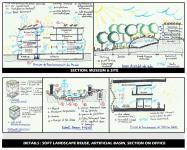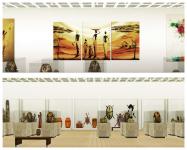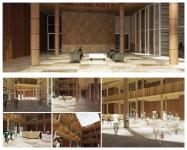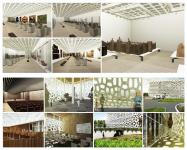***INTRODUCTION***
Culture is the proof demonstrating the existence of a human group and a nation is alive when its culture stays alive. Thus, the "African Museum of Art and History" is a place of memory, meeting, debate, training, research, learning, awareness and social gathering. This is a multifunctional space that serves as exchange between visitors and the African culture.
The twenty-first century is maybe the starting of the golden age of African peoples. An observation shows that this growth is inevitably accompanied by an advanced disappearance of its cultural identity in favour of the globalisation. So, what legacy for the next generation? How can a museum of art and history contribute to the conservation, enhancement, diffusion and promotion of African culture?
For millennia, the history of civilisations has shown culture and art have always been central to the life (rites, traditions, etc.). This assertion is true when we learn the history of its greatest kingdoms. Africa has known great empires and kingdoms (Songhai, Ghana, Mali, Monomotapa, NOK, Nubia, Berber, etc.) with lifestyles based on rites, tradition, culture and arts. These conferred them prosperity and perennity.
Culture is a complex mix of values that characterize a human group, the interest to know and preserve its culture becomes an imperative, because you can’t develop harmoniously values that we don’t know.The museum offers exclusivity on the whole African culture into a single museum in a country which focuses all the cultural diversity of Africa on a single territory "Cameroon
The twenty-first century is maybe the starting of the golden age of African peoples. An observation shows that this growth is inevitably accompanied by an advanced disappearance of its cultural identity in favour of the globalisation. So, what legacy for the next generation?
***CONCEPT***
The Museum is an amorphous structure; this transcribes history in his glory and doubt moments. The architectural gesture is a form of transition between periods of history, because the museum is not the only purpose of telling the past, it also prints the present and ensures historical continuity of events. This temple of the culture hosts the spirit of the forest, the worship and the sacred. All mutations of history are taking shape here; everything is there, the ordinary, the sacred, the forbidden and the new.
The design is based on the concepts of biomimicry and the sacred wood. The amorphous structure of the envelope project transcribes history in his glory and doubt moments. The architectural gesture is a form of transition between periods of history, because the museum is not the only purpose of telling the past, it also prints the present and ensures historical continuity of events.
This temple of the culture hosts the spirit of the forest, the worship and the sacred. All mutations of history are taking shape here; everything is there, the ordinary, the sacred, the forbidden and the new. There isn’t social censure even whether to shock. Nothing is unethical except the refusal to bow before the majesty of his relics of art and history as presented in their original contexts.
The architecture is based on the beauty of the natural landscape, "Yaounde, the city of seven hills ". This process of research and creation stems from a desire for social cohesion, energy efficiency and environmental sustainability.
2016
2016
***LAYOUT***
The ‘African Museum of Art and History’ offers the whole African culture into a unique space; a country which focuses all the cultural diversity of Africa on a single territory ‘Cameroon’.
Culture is the proof demonstrating the existence of a human group and a nation is alive when its culture stays alive. The museum is a place of memory, meeting, debate, training, research, learning, awareness and social gathering. It is multifunctional.The project of museums turn around three main key words: Nature, Architecture and Sculpture. These are the federative ideas. The concepts are biomimicry and sacred wood. As main area of the museum we can count; exhibition room, administration, animation, research, Education, library, etc.
***MATERIAL***
Wood is one of the main materials using for walls, partitions, decorations, and ceilings. Because of its low ecological impact and its local availability, it is a better choice as local material. Cameroon count 22 million hectares of rainforest. Wood allows obtaining rigorous thermal and acoustic comfort for the whole building.
Ecological, 1 m3 of wood can stocks 1 tonne of CO2, so flexible its density varies from 350 to 1100 kg/m3. For an operating humidity level less than 17%, its combustion is 0.7 mm/min. Malleable, Wood can be used as, glued laminated and laminated timber, sandwich panels, composite wood, etc. It can be treated against weather and insects by brushing/Sprinkling, soaking, autoclaving, thermal, Oleo thermic, etc.
***SUSTAINABLE FEATURES***
The museum has more than 3000 m2 of solar photovoltaic panels; the insolation in Yaoundé is 5.48 KWh/m2/day. It then produces 16.44 MWh/day or 6000.6 MWh/year. The yield performance of the best solar panels reaches 60%, and the average are between 20% and 40%. The energy really produced is 2100.21 MWh/year (35% yield).
The comparative study shows that in 2008 the Cleveland Museum spent 3500 MWh (65% electricity) on 21,368 m2 of surface area. Our estimation is 1760 MWh for 24,054 m2 (Unnecessary Heating in Cameroon). The museum is a positive energy building; it spends 1760 MWh/year and produces 2,100.21 MWh/year, a surplus of +340.21MWh/year. Nevertheless, the museum will be connected to the national distribution networks.
The idea is to reduce the excavation and to optimise recovery of construction waste on the site. At the earthworks, layers of humus and litter will be stored for later use in the garden. The Reduction of sound and atmospheric pollution is possible with garden and vegetable cover rich in species. The site is accessible for handicapped people.
The recovery of rainwater and storm water is for watering. The permeable sol covering is to facilitate the infiltration of the rain waters. The conservation of trees as much as possible is introduced. Paper represents 3/4 of consumables, a person produces on average 75 kg/years of paper waste. With more than 200 employees, the museum produces at least 20,000 kg/year. These papers will be collected separately for recycling.
***AWARDS***
Finalist | UnIATA-Unfuse 2018 | Cultural Identity | African Museum of Art and Culture | 2018
HKA | Hermann Kamte & Associates
Hermann Kamte
Favorited 1 times
